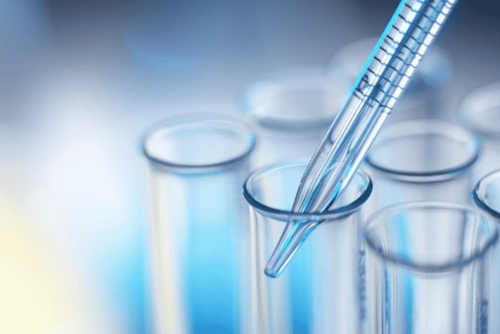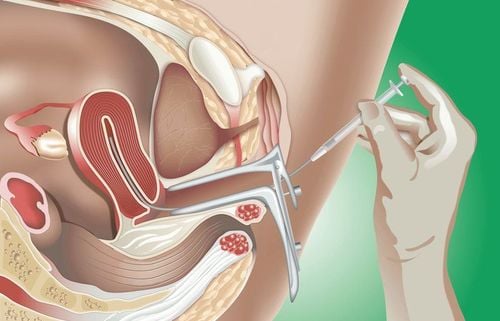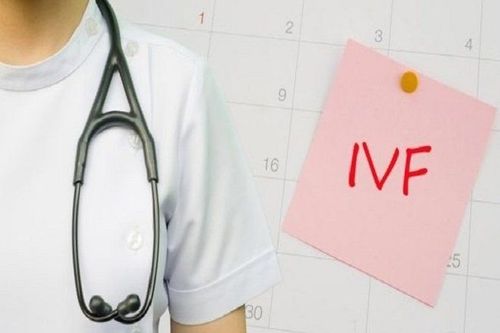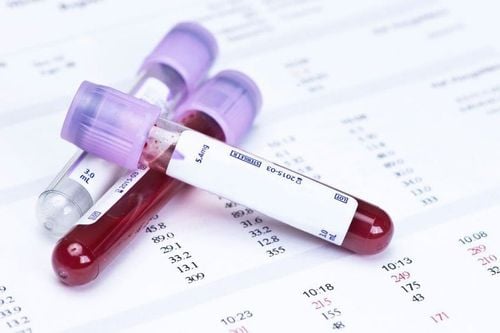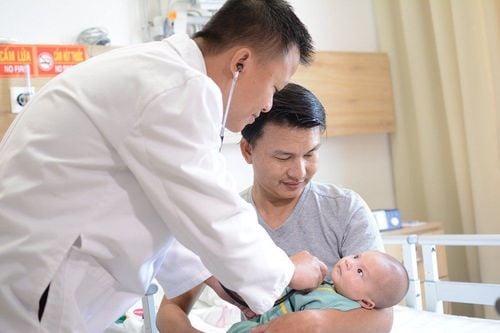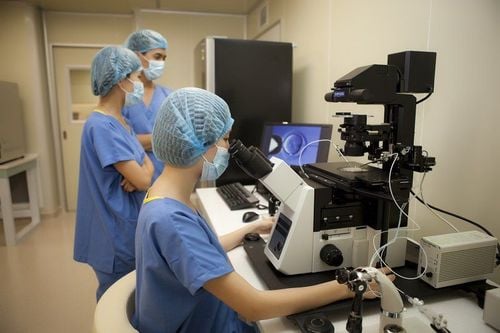This is an automatically translated article.
Posted by Master, Doctor Huynh Vu Khanh Linh - Doctor of Obstetrics and Gynecology - Department of Obstetrics and Gynecology - Vinmec Phu Quoc International General Hospital
Intrauterine insemination is a safe and simple method of assisted reproduction. This is a method of using a small catheter, inside which contains washed, selected sperm, passed through the cervix and injected directly into the woman's uterus when the egg has matured, in order to create favorable conditions for pregnancy. Egg and sperm meet to fertilize.
1. What is the technique of injecting sperm into the uterus?
Intrauterine insemination is a method of using a small catheter, inside which contains washed, selected sperm, passed through the cervix and pumped directly into the uterine cavity. The procedure is very quick (about 2-5 minutes) and is usually painless for the patient.
The principle of intrauterine insemination (IUI) is to reduce the adverse effects of vaginal environment and cervical mucus on sperm; at the same time bring the sperm to the position closest to the egg. The current technique of performing IUI usually includes 3 steps: Ovarian stimulation - Sperm preparation - Insemination of sperm.
1. Ovarian stimulation The success rate of IUI cycles is markedly increased if ovarian stimulation is present. When ovarian stimulation, if you get many superior follicles, the possibility of pregnancy will increase.
Monitoring of ovarian response is done by combining transvaginal ultrasound and endocrine testing if necessary (E2, serum LH). Accordingly, basic ultrasound is needed at the beginning of the cycle, before stimulation to serve as a basis for evaluating follicular development. Folliculoscopy is usually started on days 6-7 of the cycle. Then, repeat ultrasound every 3 days to assess ovarian response and increase or decrease the dose as appropriate.
Ovarian follicles are usually assessed as mature if the size on ultrasound is 18 mm and serum E2 is > 350 pg/ml/follicle (may vary depending on stimulation regimen). If the follicle is assessed as mature, the doctor will give hCG (dose 5,000 - 10,000 UI) intramuscularly to stimulate ovulation. Patients will be scheduled for an IUI approximately 36 hours after hCG injection if administered once, or 24 hours and 48 hours after injection twice.
1.2. Sperm preparation Semen has the function of neutralizing and protecting sperm from the acidic environment of the vagina. In addition, semen also has a part in stabilizing and nourishing sperm. However, semen has many adverse effects on sperm after being released into a woman's vagina. It has been found that semen can reduce the vitality, motility and ability of sperm to fertilize.

Tinh trùng cần được chuẩn bị trước khi bơm tinh trùng vào tử cung
Some of the benefits of sperm preparation methods are as follows:
Removes dead cells, most microorganisms and most toxins to sperm. Eliminates a large part of Prostaglandins in semen, avoiding uterine contractions during IUI. Stimulates the activation of the sperm head, facilitating the fertilization of the egg. The risk of infection from semen is largely reduced, as current methods of sperm preparation can detect and eliminate most microorganisms present in semen. Avoid the risk of anaphylaxis that sometimes occurs when semen is inserted into the uterus. Reduces the risk of anti-sperm antibodies in the wife when too much dead sperm is added to the uterus. Due to the outstanding advantages over the fresh semen injection method in terms of technique, as well as in terms of safety and medical ethics, people currently only apply the IUI method with prepared sperm. The two most effective and widely applied methods today are the swimming up method (Swim-up) and the filter method using the concentration scale (Gradient).
Gradient method significantly improves clinical pregnancy rate compared with Swim-up method during IUI cycle in couples with unexplained infertility. In patients with male factor infertility, both methods produce similar clinical pregnancy outcomes.
Some things to keep in mind:
Semen is usually collected about 2 hours before insemination. Time to abstain from ejaculation from 2-7 days before taking semen for treatment. Semen must be collected by hand (masturbation) into a clean, sterile vial. To reduce the risk of infection, the husband is often prescribed by the doctor to take Doxycycline 100mg, 2 tablets / day, within 14 days, before performing IUI.
1.3. Injecting sperm into the uterus Sperm after preparation must be kept warm and pumped into the uterus as soon as possible. Accordingly, technical manipulations must ensure sterility to avoid female genital tract infections.
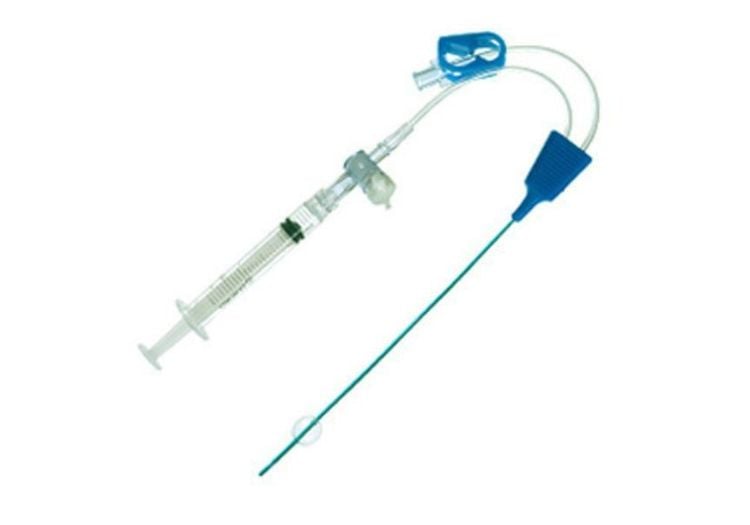
Catheter dùng để bơm tinh trùng

Hình ảnh bơm tinh trùng vào buồng tử cung
Intrauterine insemination technique is performed as follows:
The number of times of intrauterine insemination (IUI) depends on the indication of the treating doctor.
1 time: 36 hours after β-hCG injection. 2 times: 24 hours and 36 hours after β-hCG injection. The doctor performing the sperm injection will wash his hands before the procedure, wear a hat, mask and sterile gloves. The patient lies in the obstetrical and gynecological position, covered with sterile towels. The midwife prepares the equipment including: bed sheets and intrauterine insemination devices.
Step 1: The doctor places a speculum to gently expose the cervix. Wipe the vagina and cervix with physiological saline. Step 2: Prepare 1 ml syringe and catheter used in IUI. Step 3: Insert the catheter through the cervix into the uterine cavity about 5-6 cm, avoiding the bottom of the uterus. In difficult cases, Pozzi can gently pull the cervix. Gently pump sperm into the uterine cavity until the end. Remove the catheter gently from the cervix. After pumping, let the patient rest in place for about 15 minutes before going home.
2. Complications when performing intrauterine insemination technique
Possible complications when performing intrauterine insemination techniques include: infection with sexually transmitted diseases, infection of the upper genital organs, anaphylaxis... However, the The above complications are common in the case of fresh sperm injection, less common in the case of processed sperm injection. Therefore, it is necessary to pay attention to the issue of sterility in sperm handling.
In addition, there are other complications such as: ovarian hyperstimulation syndrome, multiple pregnancy. These complications are common in cycles that use ovarian stimulators.
3. Influence of some other factors on IUI results
The outcome of IUI depends on many other factors, including both subjective and objective factors. IUI results are usually calculated as pregnancy rates per treatment cycle. This result also varies depending on the center, the treating doctor, the indication on each specific patient, the type of ovarian stimulation drug, the sperm washing method and the flexible application of the protocols. ovarian stimulator.
Besides, patient selection is an important factor in determining the success of IUI. The line between the choice of IVF or IUI is not clear. This depends on the experience and acumen of the treating doctor in addition to consulting and discussing with the patient. Important prognostic factors for IUI success include: young mother, good ovarian reserve, two catheters, no severe endometriosis, no sperm dysfunction too heavy.
Currently, there are many types of ovarian stimulation drugs that differ in composition, drug ratio as well as mechanism of action. The choice of drugs, drug concentrations and the use of appropriate regimens, flexible combinations of regimens also help increase the success rate of IUI methods. In addition, the choice of treatment depends on the economic ability of the patient.
Currently, most centers use Gradient method to filter and wash sperm. Although the Swim-up method yields sperm with high motility, the pre-washed sperm sample must have good motility. In addition, rapidly motile sperm are more likely to have DNA abnormalities due to their lighter weight than other sperm.
With the desire to be the place where the dream of parenting for many infertile couples is raised, now Vinmec International General Hospital is implementing most of the advanced assisted reproductive techniques in the world such as: : washing and pumping sperm into the uterus, injecting sperm into the oocyte cytoplasm, reproductive reserve, supporting embryos to escape membranes, in vitro fertilization... the success rate is quite high, bringing joy parent to many long-term infertile couples.
With high expertise and extensive experience, Vinmec IVF Center's experts are capable of synchronously and comprehensively deploying the most advanced assisted reproductive techniques today, helping realize the dream of becoming a parent of hundreds of families across Vietnam.
Please dial HOTLINE for more information or register for an appointment HERE. Download MyVinmec app to make appointments faster and to manage your bookings easily.




